Did you know that the humble daisy has been used for centuries as a herbal medicine and that modern researchers are investigating the therapeutic properties of this plant?
The common daisy (Bellis perennis) is arguably one of the most useful therapeutic herbs that we have and is grossly over-looked. Ask people about the daisy and most of them will have made daisy-chains but won’t know that the daisy is edible and is also a valuable herbal medicine.
Daisy has fallen out of use in modern herbal medicine but at one time its properties were much better known. It was traditionally used to ease aches, pains and strains in a similar way to how we use arnica (in fact, arnica is a type of daisy too: this one is native to the Swiss Alps). Our common daisy was known as “Gardeners’ Friend” because people used to apply it to relieve their aching joints after a day of crouching down working in the garden. So, the same types of arnica products that we are familiar with and usually buy can be made using daisy instead e.g. infused/macerated oil, balms, ointments etc.
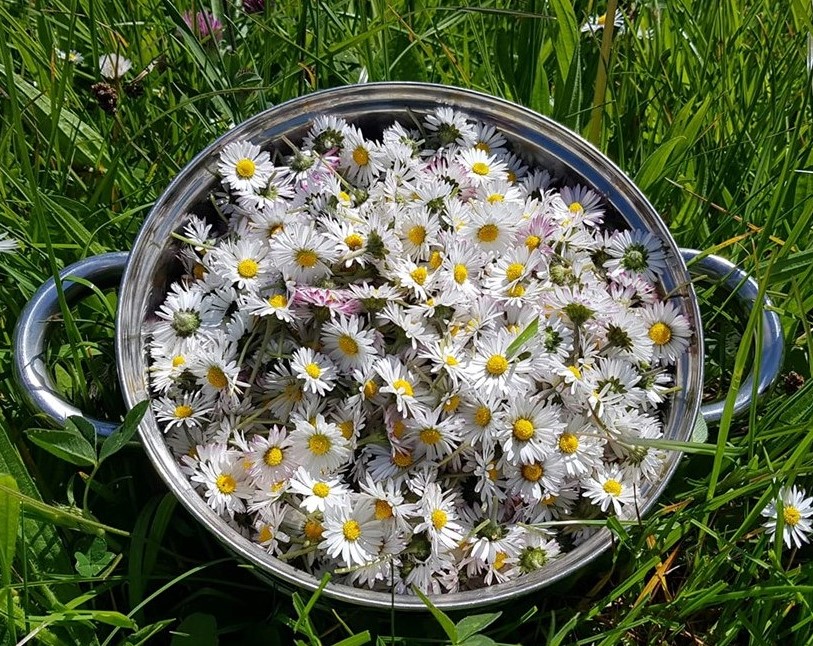
I’ve been working with daisy as an herbal medicine for 15 years now. Intriguingly, in my experience, daisy penetrates more deeply than arnica, often bringing some relief to injuries and chronic pain where arnica treatments haven’t had a full effect. I particularly like making a warm poultice with daisy. These are easy to make at home in the kitchen using fresh daisies you’ve collected or dried daisies that you have bought from an herb shop (or dried yourself of course). It can be beneficial to relieve repetitive strain injury (RSI) and tendonitis. During the pandemic lockdown, I developed RSI in my wrist because I was doing so much work online (the repetitive movement required for using the mouse and keyboard caused the pain to develop). Poultices of daisies were hugely helpful in relieving this.
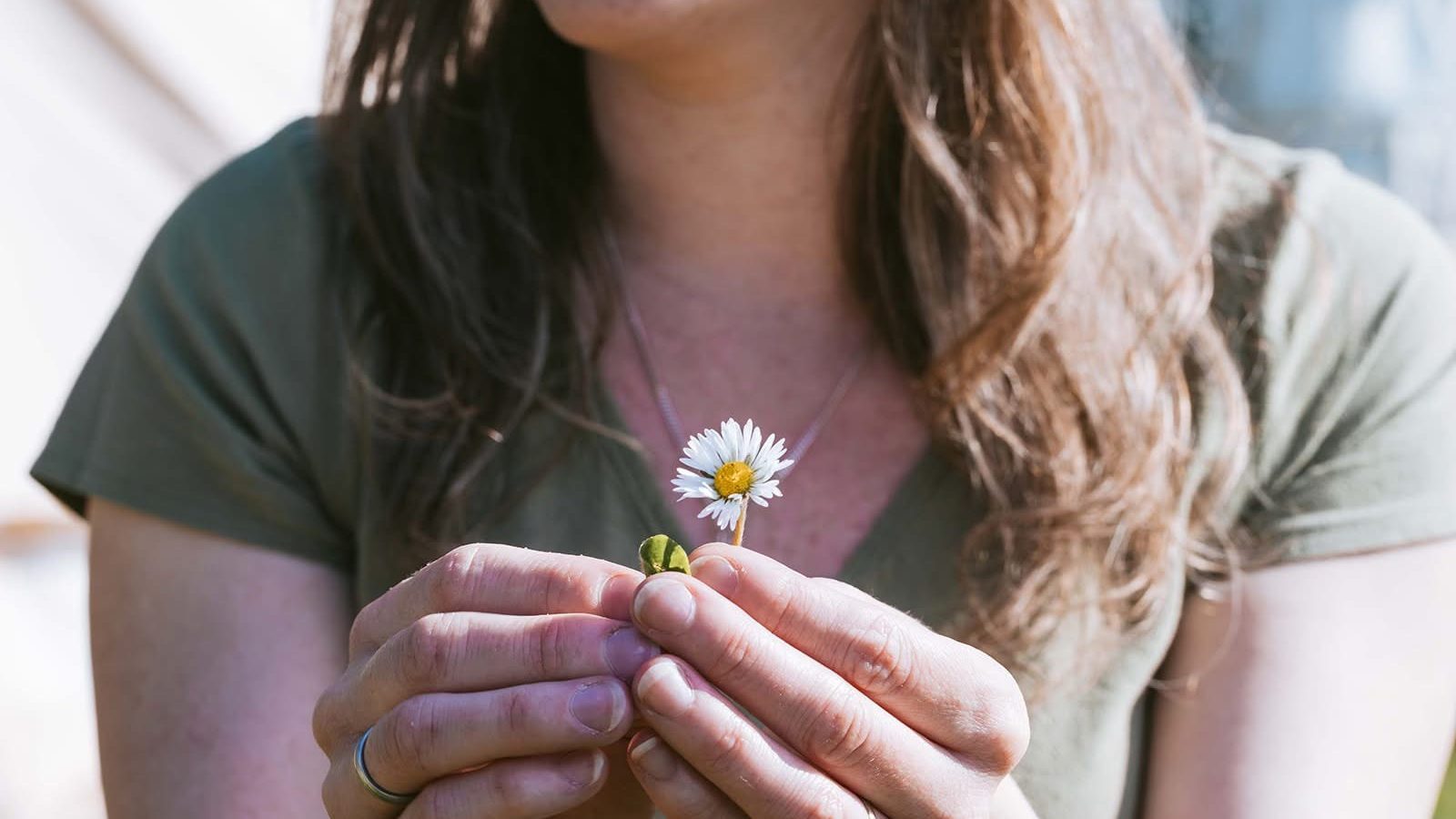
Daisy was also thought to be a wound-healer and people would apply it to cuts and scrapes to help to help with healing. A research study published in 2012 appears to confirm these properties. This study found that 100% of the wounds treated on rats with an extract of daisy healed perfectly without any scarring. The researchers concluded “Thus, traditional usage of wound healing activity of B. perennis was scientifically verified for the first time.” This combination of helping to heal minor cuts and scrapes as well as bringing some relief to bumps, bruises & sprains really can make Daisy balm a very handy addition to the home-remedy first aid box.
Would you like to learn how to make your own daisy extracts, balms, poultices and treatments? Why not join me for an online class about daisy? Click here to for details of upcoming classes.
Internal Herbal Medicine: Drinking Daisy
Traditionally daisy was also made into infusions or tinctures and taken internally as a medicine. People used daisy extracts to relieve coughs, colds and catarrh. Modern analysis of this plant has found that daisies contain nearly as much vitamin C as lemons! Which brings me on to eating daisies…
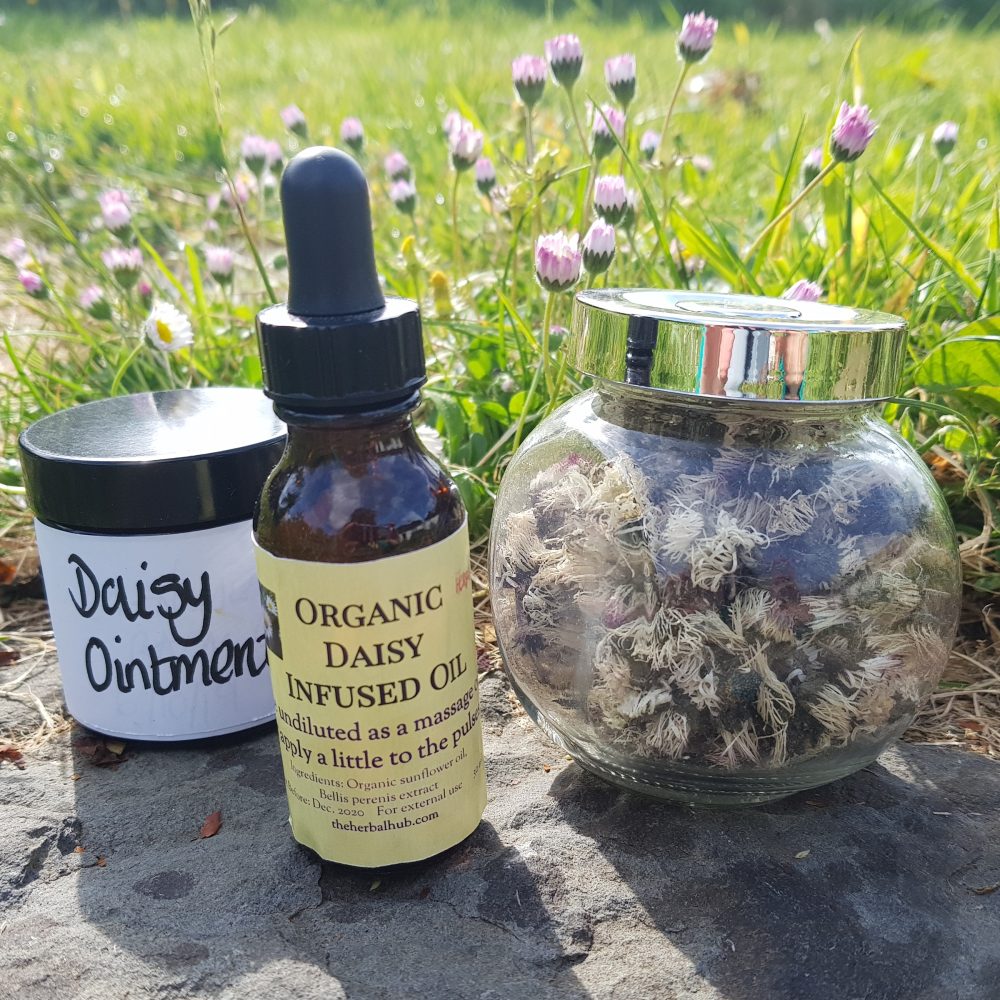
Culinary Dishes: Eating Daisy
Daisies are edible and are a very easy plant to forage for. Pluck the young leaves and flowers and add them to salads. Try decorating cakes with some daisy petals. Daisy tea is very refreshing and has a subtle lemony taste. Add 2 tsp of fresh daisies to 1 cup of boiled water. Infuse for 10 mins. Strain off the herbs and drink the liquid. A word of warning: don’t do any of these things if you are very allergic to pollen because daisy flowers contain pollen and could trigger this allergy.
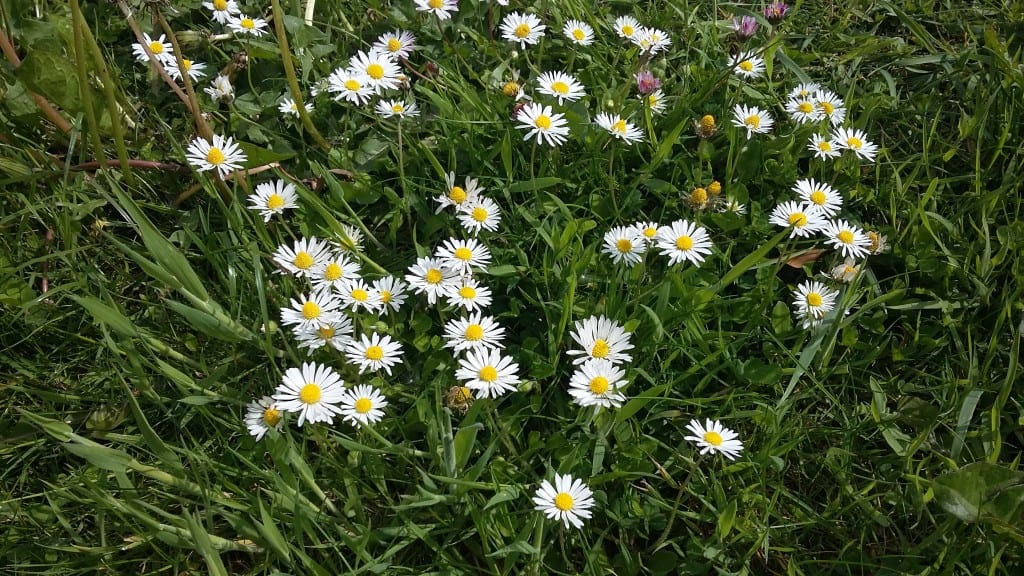
So what’s in Daisy?: Research & Analysis
There is always so much to learn about therapeutic herbs. Sometimes modern researchers investigate known traditional uses of herbs and find chemicals in the plants that verify the traditional uses. Other times researchers discover possible new therapeutic uses for plants when they find chemicals in them that suggest another potential use.
A study published in 2014 indicates unexpected potential. Researchers investigated anti-tumour properties (i.e. the potential ability to stop tumours growing) of extracts of daisy. I don’t know what prompted the researchers to investigate this because I haven’t come across any evidence from history of people having used daisy in an attempt to deal with cancers or tumours. I’m glad that the researchers conducted this study though because they found that certain extracts of daisy showed highly significant anti-tumour activity. This study was conducted on potato tissue (this is the standard way for testing substances to see if they have anti-tumour properties) and is a very long way from suggesting that extracts of daisy may help to prevent cancer growth in humans. Often in scientific research what is effective in isolation in the test-tube is rendered completely ineffective when given to humans in real life (because of the complex interaction of all the different chemicals within the body). However, it would be fascinating to see what further studies into this area would reveal.
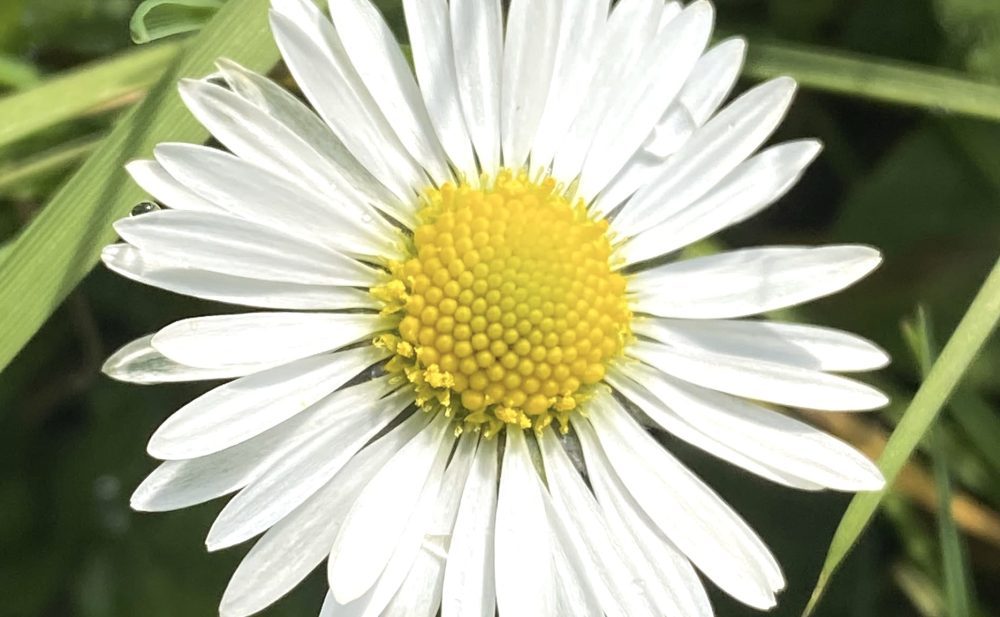
Get outside and take a ‘Daisy-break’
Since I first wrote a blog about Daisy a decade ago more people have heard about the medicinal uses of daisy. I am so glad to see the increase in awareness of the many applications of this abundant wildflower. It’s great to see extracts and products made from it becoming more readily available. It grows prolifically around so many of us, after all. Having worked with daisy for 15 years, I have become convinced that one of the ways it exerts its medicine is by bringing us some cheer! The daisy’s bright, abundant, cheerful flowers rarely fail to make people smile, and this joy can often bring in some much-needed lightness and fun. Half an hour spent outside picking daisies can lift our mood, meaning we bring home a big smile as well as our precious medicine. Wherever you are too, you can spend a little time outside and enjoy taking ‘ a daisy break’ as you pick yourself some of these joyful, medicine-packed little flowers.
I’m off now to relax and enjoy my vitamin-C laden cup of daisy tea. Not such a humble daisy now, eh?
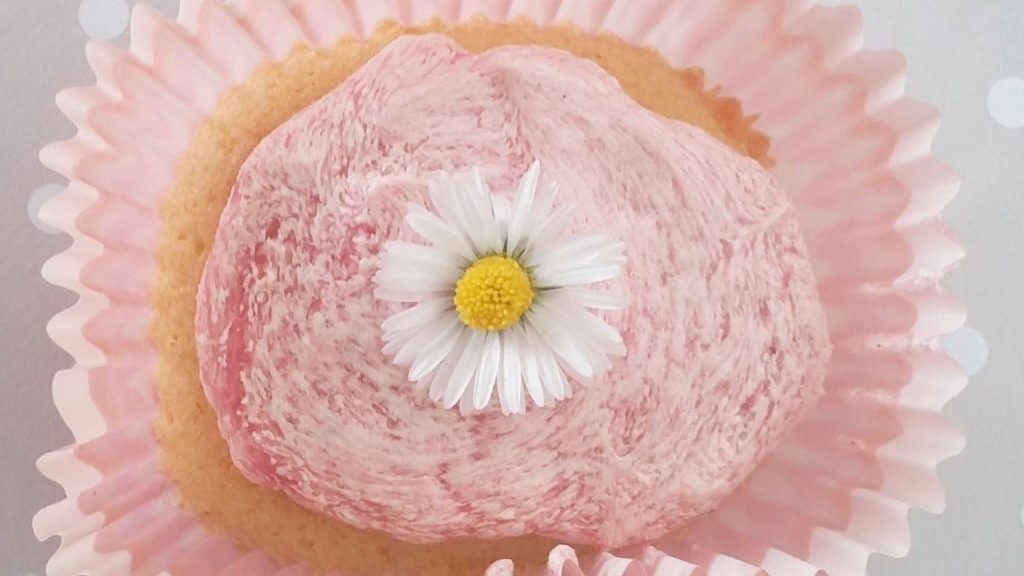
This blog/article is copyright Vivienne Campbell 2015 © and was updated in March 2025.
LEARN MORE
Would you like to learn how to make your own daisy extracts, balms, poultices and treatments? Why not join me for an online class about daisy? Click here to for details of upcoming classes.
ABOUT VIVIENNE
Vivienne Campbell BSc (Hons) MNIMH qualified as an medical herbalist in 2003 and has worked as an herbalist ever since, initially setting up her herbal medicine clinic in the west of Ireland. She teaches classes on herbal medicine, wild food foraging and natural cosmetic-making in Ireland, Portugal & the UK. She teaches worldwide via her online video courses and classes. She runs classes from beginners’ level to professional. She is a member of The National Institute of Medical Herbalists and The Association of Foragers.
You can see more details on her website.
Forage London Blog
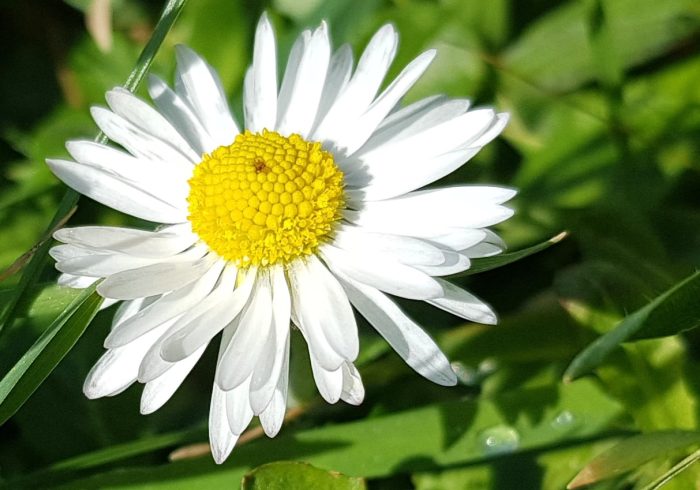
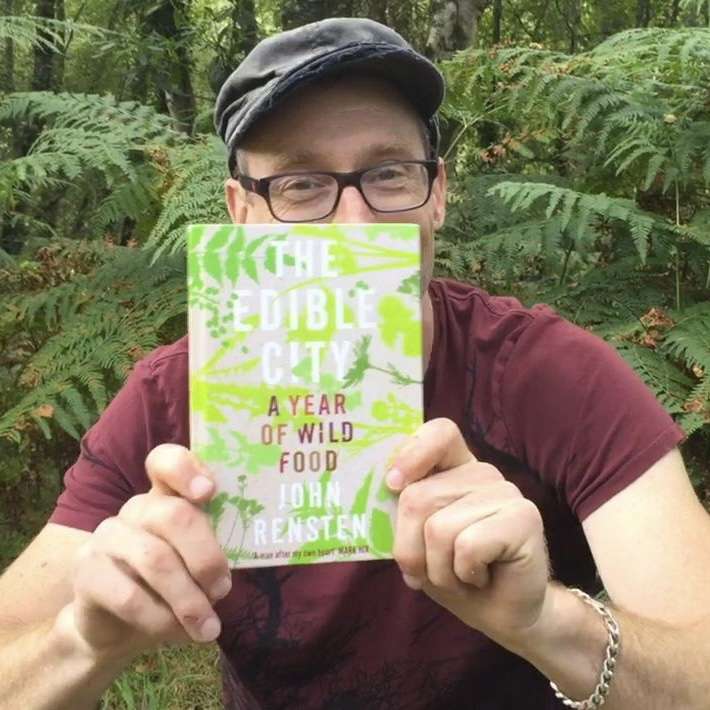
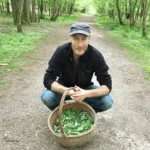

I have recently qualified as a health coach and am really interested in Foraging
You should take a look at some of Viv‘s online courses then